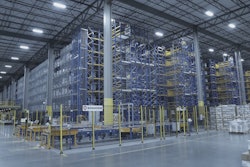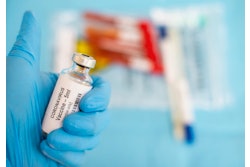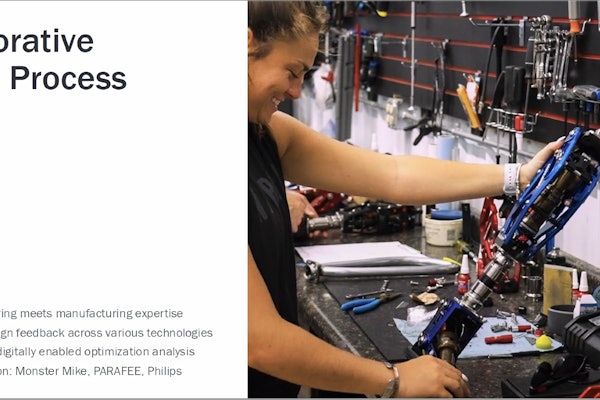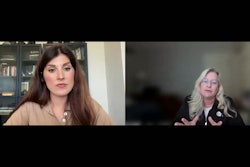- unPACKed with Healthcare Packaging: Sustainability's Difficult Dance with Life Sciences
- Sustainability & DTC: Pharmaceutical Manufacturing Trend Shaping the Future
- Emerging EU Sustainability Regulations for Packaging
 | Read the transcript below: |
Hi, I’m Keren Sookne with Take Five Video for Healthcare Packaging.
This week I’m at the 2022 ISTA Forum, featuring TransPack and TempPack, in San Diego.
The event is for the packaging community to come together to tackle challenges, explore industry best practices, discover trends, and shape the future of transport packaging.
I found the morning sessions really informative—here are some of the key takeaways:
During the keynote on The Outlook for E-Commerce and Smart Packaging delivered by Smithers’ Benjamin Trent, we continue to see the importance of QR codes on packaging.
Not only do they minimize packaging real estate needs, but they supply needed benefits such as supply chain information, ingredient and allergy lists, consumer education, product authentication, instructions for proper disposal or recycling, and more… really feeding consumers’ needs for real-time information.
Meanwhile active and smart packaging can combat the important problem of food waste, preserving the lifespan and quality of food.
Next, Specright Founder and CEO Matthew Wright talked about the transition of packaging to a digital world through data.
He highlighted that we have to create product and packaging data that computers understand. This is a cross-industry issue that he likened to gathering the 10 smartest people in room to solve a major global challenge, but they don’t speak same language and nothing gets accomplished.
So companies have to build datasets that computers can understand.
And this has far-reaching implications…. in order to make sustainable changes, you need data to know the truth.
He noted that Gartner predicts 90% of public sustainable packaging commitments won’t be met by 2025.
And “It’s not for lack of desire or trying. It’s lack of data, if we don’t address the data issues, we won’t jump the chasm to be sustainable.
He said We need products and packaging to speak the language of computers- we do this by digitizing specification data.
Now let’s get into some detail from this morning’s sustainability panel, featuring a number of leaders in the packaging community.
Something that came up quickly is that there’s a huge gap right now in consumer education.
Brent Nelson noted that in general, there’s a lack of understanding about carbon. People tend to focus on plastics, understandably, as they are a tangible thing that comes through their doors. More education is needed for consumers to understand packaging choices, life cycle analyses, and more. A given package may seem greener, but does it use more water or energy?
There was a strong focus throughout the panel on taking the consumer or legislators on the ride. As Jonathan Quinn put it: We can develop materials, format, structure.., but if we don’t take them on the development ride… show the impacts of making a change, they’re not going to understand.
While legislation can be good and a needed facet in creating positive change, the packaging community has to present a united front and get legislators to understand the ramifications of what they’re proposing. The panelists urged attendees to get involved in this effort.
Abbvie’s Ryan Stolzenbach highlighted that when thinking about the consumer or end user interacting with a sustainable package. Keep the packaging simple, make it intuitive to know what it is, what you do with it.
Simple functionality, simple labeling, and simple materials that will come apart instead of asking the consumer to take them apart in many steps. Easier said than done considering the job that packaging is tasked with, but an important goal.
He also talked about recyclable vs recoverable, and that brands shouldn’t fool themselves in making a number of components that are technically recyclable but unlikely to be sorted properly or fit in recycling machinery.
Dow's Jill Martin reminded attendees that financial institutions are looking at company ESG statements, and that customers are approaching suppliers when looking for help with Scope 3 goals outside of their own orgs, which we'll get into in more detail in the forthcoming article.
Michelle Bryson hammered home the need to come to your OEMs earlier on. For materials at the leading edge of sustainability, it’s going to take development time to ensure materials on the machines. Maybe there’s a different forming process, or grippers need alteration. Speeds, costs and technologies will vary so the early you collaborate with OEMs, the better.
Now, these were just highlights from Day One. Stay tuned for more detail as I develop stories from the Forum. Thanks and see you next time.






















